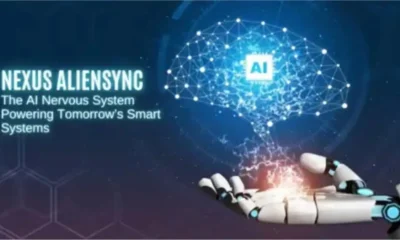EDUCATION
Harrison Assessment Tests Prep: Expert Tips

In this guide, we’ll share expert advice and practical tips to help you ace the Harrison Assessment Tests. These tests are crucial for job interviews or career growth. We’ll cover everything from understanding the test format to managing your time well.
Our goal is to give you the tools and confidence to tackle these assessments with ease. You’ll learn how to prepare and excel in the aptitude tests and personality questionnaire. We’ll also provide valuable resources and tips to make your preparation smoother
Key Takeaways
- Gain a comprehensive understanding of the Harrison Assessment Tests, including the types of assessments and their objectives.
- Learn effective strategies for preparing and excelling in the aptitude tests.
- Discover techniques for mastering the personality questionnaire, including interpreting the questions and providing honest responses.
- Explore valuable resources and expert tips to streamline your Harrison Assessment test preparation.
- Unlock your full potential and enhance your chances of success in the hiring process or career advancement.
Understanding the Harrison Assessment Tests
Before we dive into how to prepare, let’s understand the Harrison Assessment Tests. They fall into two main categories: aptitude tests and personality questionnaires.
Types of Assessments
The aptitude tests check your problem-solving, math skills, and verbal abilities. They aim to see how smart you are and how you handle tasks.
The personality questionnaire looks at your behavior, work style, and how you interact with others. It helps understand your personality, how you communicate, and your professional relationships.
Objectives and Scoring
The Harrison Assessment Tests aim to see if you’re a good fit for a job or company. They also highlight your strengths and areas to improve. The scoring system evaluates your skills, aptitude, and personality.
Preparing for the Aptitude Tests
Mastering the Harrison assessment aptitude tests is key to success. Focus on improving your cognitive skills with practice exercises. Learn the test format, question types, and time limits to develop good strategies.
Time management is crucial. Practice timed tests to get better at managing your time. This helps you quickly solve questions and answer them within the given time.
Improving your cognitive skills is also important. Try puzzles, memory games, and logical exercises. These activities boost your critical thinking and problem-solving skills, vital for the tests.
- Practice time management strategies to improve your efficiency during the tests
- Engage in cognitive exercises to enhance your problem-solving and analytical abilities
- Familiarize yourself with the test format and question types to develop effective strategies
- Utilize Harrison assessment aptitude test prep resources and practice tips to refine your cognitive skills improvement

Spending time on Harrison assessment aptitude test prep can improve your performance. Focus on time management and cognitive skills improvement to succeed in the Harrison assessment process.
Mastering the Personality Questionnaire
When you get to the personality questionnaire part of the Harrison assessment, be honest and true to yourself. This part checks how you behave, work, and interact with others. It’s key to answer in a way that shows who you really are.
Interpreting the Questions
Take your time to really understand each question. Look deeper than the first meaning to find what’s really being asked. This way, you can answer in a way that truly shows your personality and what you like.
Strategies for Honest Responses
Don’t try to make your answers sound better than they are. The Harrison assessment aims to find your real strengths and weaknesses. It’s important to be open and honest in your answers. This shows who you really are.
Remember, the Harrison assessment personality test is not about pretending to be someone else. It’s a chance to show your self-awareness and be your real self. By doing well in the personality questionnaire, you can show your true self and improve in the test.

Harrison Assessment Tests Preparation
Creating a solid Harrison assessment test prep plan is key to doing well. Spend enough time getting to know the test format. Practice each part and learn how to manage your time well.
Use many study resources like online tests, sample questions, and industry tips. This will help you get ready for the test.
With a good, comprehensive strategy, you’ll do great on the Harrison Assessment. Show your skills to employers. Put in the time and effort to be ready for the test.
The Harrison Assessment is your chance to show what you can do. Stay positive and use all the resources you can. With a smart plan, you’ll ace the test and move forward in your career.
-

 BIOGRAPHY7 months ago
BIOGRAPHY7 months agoBehind the Scenes with Sandra Orlow: An Exclusive Interview
-

 HOME1 year ago
HOME1 year agoDiscovering Insights: A Deep Dive into the //vital-mag.net blog
-

 HOME1 year ago
HOME1 year agoSifangds in Action: Real-Life Applications and Success Stories
-

 BIOGRAPHY1 year ago
BIOGRAPHY1 year agoThe Woman Behind the Comedian: Meet Andrew Santino Wife




























